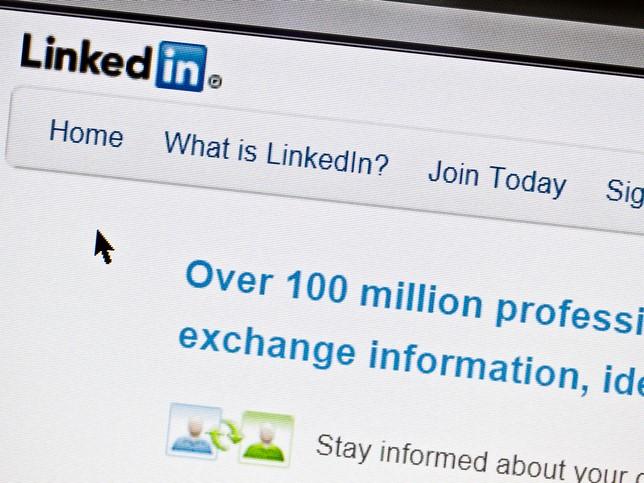A shudder passes around the training room. For I have dared to mention LinkedIn. A tentative show of hands reveals that half the group of early career researchers has a profile. At least two of them even know their password. But given this is a careers workshop, can they really afford to ignore a tool based on building your career?
In some quarters there is academic snobbery about LinkedIn, as if anything “businessy” couldn’t possibly be of use to those scaling the ivory towers. But at the risk of being about as popular as Reviewer #2 – I think LinkedIn is essential to career progression.
Firstly, LinkedIn plays the Google game very well. Chances are your LinkedIn profile will appear well above your departmental page with its rubbish formatting and dreadful ID badge photo. You can then control the message future employers and collaborators see.
- If universities push staff towards social media, they must protect them, too
- Don’t believe the hype: being an ECR needn’t be a lonely existence
- Researchers: fight back against your struggle with self-promotion
But the real reason to engage is the sheer amount of information LinkedIn has to offer those looking to move on in their careers – academic or otherwise. Career moves usually come with a barrage of uncertainty: what is postdoc like at the University of Toronto? What it is really like to be a patent attorney, medical writer or policy adviser? What does a standard academic CV in Germany look like? How can I get an introduction with that medical device company?
In their book Decisive, Chip and Dan Heath encourage “reality testing” of potential decisions. We can do this factually on LinkedIn by studying company pages, finding out which universities are hiring and understanding job descriptions. But the Heath brothers encourage us to get to the human, emotional side of the reality, too. This is where your network comes in.
The research of Stanley Milgram and more recently Duncan Watts suggests that on our socially networked planet, we are only six degrees of separation away from anyone else. However, when it comes to asking for a favour (information or an introduction), it helps to build a chain of trust. Which is where your LinkedIn second and third connections come in, according to Reid Hoffman.
If I ask Jo (first), who knows Alex (second), who knows Chris (third), for an introduction, everyone is bracketed by, and talking with, people they know. It’s much more likely that your message will be conveyed because we know, like and trust the people asking or being asked.
If you and your connections had just 20 people each in the “favour zone”, that would be 8,000 career touchstones. Double that 20 to 40 each and you reach 64,000 potential collaborators, colleagues or helpful insights. You can identify these people using LinkedIn’s “people” search and politely approach via your connections. After all, no established academic giving career talks on my courses ever fails to mention the importance of their network and of proactively engaging with people.
The first thing people will then do is look at your profile. Does your headline – that little strapline under your name – say “PhD student”, “postdoc” or even worse “looking for work”? Does this help someone looking at your profile? No. You need to announce to the world what you have to offer with a view to what a future employer or collaborator would want to see. You have a joyful 220 characters to express yourself – so make them engaging! Think about keywords that your desired connection would use but also what might pique their interest. What makes you stand out from the crowd of other nuclear physicists/molecular biologists/ancient historians?
As author Mike Michalowicz highlights in his book Get Different, in the overwhelm of day-to-day information we only notice the different. Luckily for researchers, anyone with a PhD has already researched something novel and is therefore different. By the time we factor in degree paths, work experiences and locations we have plenty to create a strapline with a great USP (unique selling point). Just remember to ensure that USP is attractive to the right people for your chosen career track.
The “About” section is your next chance to capture the hearts and minds of new connections – you do need to outline what makes you tick here. Expand on your (work-related) interests and passions. Stitch together anything disparate in your CV such as how that degree in literature works with the PhD in environmental science (real example). This is the part where you tell us the story of you while focusing on the elements of the story that your ideal audience is interested in. Take a look at other profiles – what works well? Assimilate that good practice.
Activity also makes your profile current and more interesting. Keeping people abreast of your latest paper or presentation is simple on LinkedIn and easier because you aren’t competing with the level of noise on other platforms such as Twitter. Your potential connection is given more information about you – again building trust. The mysterious LinkedIn algorithm rewards commenting on posts and engaging but demotes those who blanket tag everyone they know (if they don’t respond).
It’s a job to get a job. All jobs are easier if we use the right tools. I’ve worked with researchers who, once they’ve engaged with LinkedIn, are often surprised at how helpful those they have approached for information can be. Can you afford to be without that insider knowledge of your connections?
Emma Williams is an independent trainer providing advice for early career researchers. A former postdoc, she is also a former head of academic practice at the University of Cambridge and co-author of What Every Postdoc Needs to Know, with Liz Elvidge and Carol Spencely.




comment